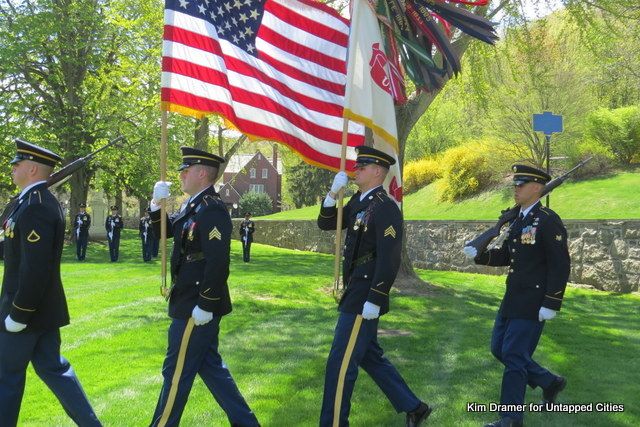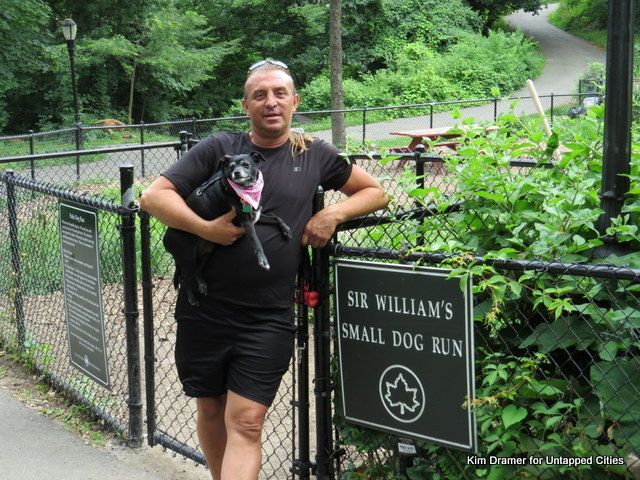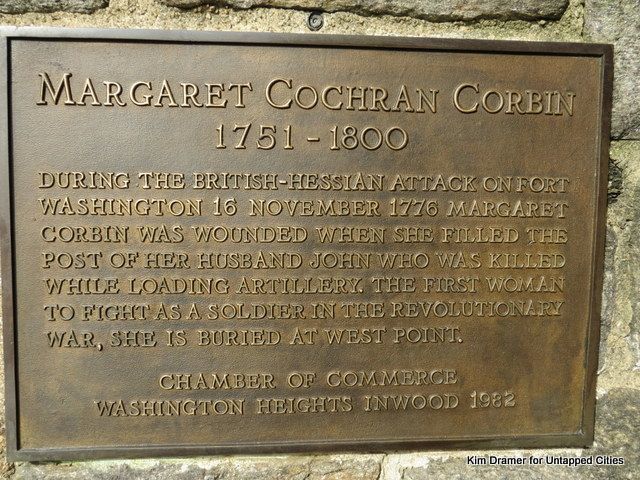Exclusive Gilded Age Arts Society Debuts New Public Exhibits in NYC
The American Academy of Arts and Letters, a venerable New York cultural institution, is a portal to art across time!


 A West Point honor guard at Margaret Corbin Day 2015.
A West Point honor guard at Margaret Corbin Day 2015.
A strange mix of Patriot and Tory still exists in Washington Heights, where American troops fell to British forces in 1776. The Battle of Fort Washington took place in the area on November 16, 1776, where the cliffs at the northern end of the island offer sweeping views of the Hudson River. This commanding position made the spot a key military point during the American Revolution.
Here, the Patriots suffered a disastrous defeat to overwhelming British and Hessian forces under the command of General William Howe. The Patriots were defending Fort Washington, the last position held by the Continental Army on Manhattan Island.
Howe, commanding 8,000 troops, called on the Patriot forces to surrender Fort Washington. When they refused, he launched a three-pronged attack. It was a total rout for the Americans with 59 casualties and 96 wounded. The British marched 2,838 American prisoners down to the notoriously deadly prison ships. Only 800 men survived their captivity.
General Washington himself escaped capture by fleeing across the Hudson River to Fort Lee from a spot just south of the bridge that bears his name. The American campaign in New York was over. The city was lost. In spring 1777, only a small force under English Governor, Sir William Tryon, was needed to hold the city.
 The entrance to Fort Tryon Park from Margaret Corbin Circle.
The entrance to Fort Tryon Park from Margaret Corbin Circle.
During the Battle of Fort Washington, Margaret Corbin became the first woman to take a soldier’s part in the American Revolution. Margaret was a camp follower, married to John Corbin, a sapeur.
 A plaque honoring the heroic actions of Margaret Corbin during the Battle of Fort Washington, 1776.
A plaque honoring the heroic actions of Margaret Corbin during the Battle of Fort Washington, 1776.
John’s duties were to swab the barrels of the cannons after they had been fired to cool them and clean out excess gunpowder. During the battle John was killed by Hessian troops. Margaret ran to take his place at the cannon. As the fighting continued, Margaret was hit by grapeshot, suffering serious wounds to her arm, chest and jaw.
https://https://www.youtube.com/watch?v=WZg7p_ZJt7w
After the American victory over the British, Margaret served in the Invalid Corps. Her duties were to guard military installations at West Point. She was awarded a half pension by George Washington. Margaret is buried at West Point, where she is honored as a heroine of the American Revolution. Her life may have served as the inspiration for the popular folkloric Revolutionary hero, Molly Pitcher, who cleaned and maintained the firing cannons during the battle.
 The final resting place of Margaret Corbin, the first woman to take a soldier’s part in the American Revolution.
The final resting place of Margaret Corbin, the first woman to take a soldier’s part in the American Revolution.
At West Point, Margaret Corbin is honored each May by the National Society Daughters of the American Revolution (NSDAR). A wreath laying is followed by a 21-gun salute and speeches detailing her heroic actions in 1776. Mingling among the DAR ladies in hats and white gloves are young women dressed in gray uniforms. They are members of the Corbin Forum, whose mission is to educate, empower and inspire West Point Corps of Cadets. Margaret Corbin would approve.
Each November, children of Washington Heights participate in a re-enactment of the Battle of Fort Washington. Little girls done colonial mob caps and watch demonstrations of military drills and blacksmithing in Fort Tryon Park.
https://https://www.youtube.com/watch?v=zfHRQCkOQmc
The park itself is named after the last English Civil Governor of New York, Sir William Tryon. Known as “Bloody Billy” for his harsh treatment of the Patriots, he also has a small dog run named in his honor.

Brutus von Klepper being held by Kevin Klepper at Sir William’s Small Dog Run
Corbin is also honored by the traffic circle at the entrance to the park and Margaret Corbin Drive running through the park.
 The road through Fort Tryon Park, a strange juxtaposition of Patriot and Tory.
The road through Fort Tryon Park, a strange juxtaposition of Patriot and Tory.
When Dutch New Amsterdam fell, the victorious British rechristened it New York. So, what happened to New York’s Fort Tryon when the Americans defeated the British? How did the park, the site of a crushing American defeat, come to be named after a figure so detested by Americans?
The name appears to be connected with the purchase of the land and its donation to New York City in 1917 by John D. Rockefeller. This was a time of heightened Anglo-American friendship and cooperation during World War I.
Asked for suggestions about honoring history and renaming Fort Tryon Park, historian Barnet Schecter, author of The Battle for New York, gave a nod to Margaret Corbin Park. He also weighed in with Moses Rawlings Park, in honor of the commander of the Maryland and Virginia Rifle Regiment that so gallantly defended the last American stronghold on Manhattan Island in 1776. Any other suggestions?
 Margaret Corbin is honored by this plaque at the entrance to Fort Tryon Park.
Margaret Corbin is honored by this plaque at the entrance to Fort Tryon Park.
Next, read about The Secrets of Fort Washington Park and 18 of NYC’s Former Military Forts. Get in touch with the author @KimDramer.
Subscribe to our newsletter